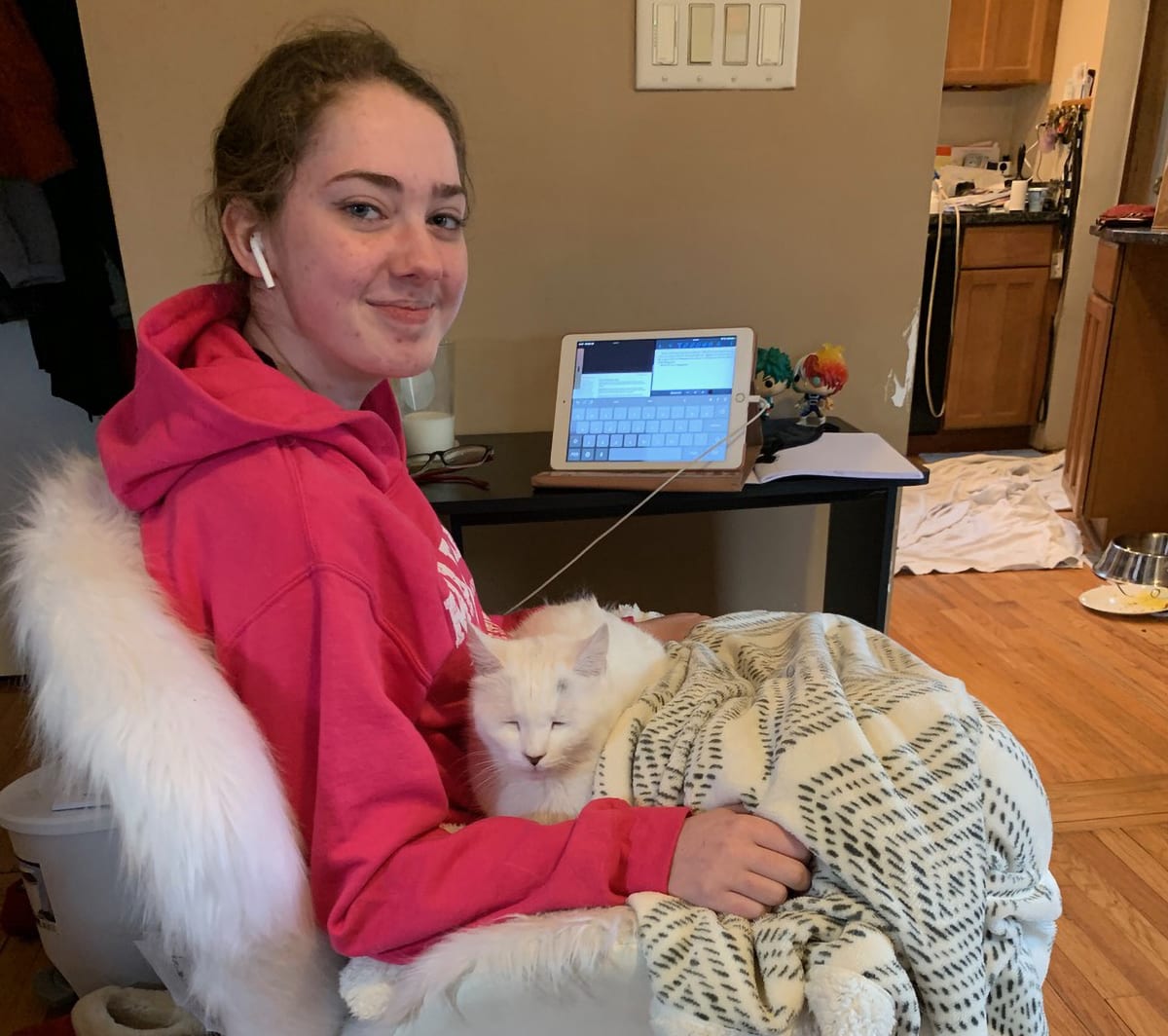It was Thursday, March 12 and the dynamic surrounding the COVID-19 virus was changing rapidly. School closings for the next day and, in some cases, the next week or two, were being announced. The Massachusetts Interscholastic Athletic Association was preparing to cancel eight state championship basketball games scheduled for that Saturday. It was becoming clear that there would be disruption to the daily routine, the only question at that point was, how much.
At St. Mary’s and Sacred Heart schools, which offer a pre-K through grade 12 education in two locations, an emergency response team scrambled to formulate a strategy for remote learning, in the event of an extended shutdown. It was decided that Friday would be an early release day for students, giving the staff the afternoon to develop a plan. As that process was unfolding, the decision was made to close the schools for two weeks.
“This moved a lot quicker than we all thought,” said David Angeramo, St. Mary’s associate head of school and co-chair of the response team. “We could see something coming, then we realized we were going to be closing for a while.”
As a 1:1 school where every student uses an iPad, St. Mary’s was better positioned than many schools. Teachers and students were already accustomed to using an online portal for assignments, discussion groups, and other communication. That was a pretty solid place to start when being forced to move teaching and learning from the classroom to the Internet.
“I think we’ve done remarkably well considering the very short prep time we had,” said Michael Jalbert, chair of the history department. “The kids have responded well.”
Through Week 2 of what will now be at least a seven-week shutdown, as ordered by Gov. Charlie Baker on March 25, students are adjusting to their new learning environment.
“We have an advantage because we were already doing a lot of work online,” said junior Jack Hogan, who had taken an online Mandarin Chinese course through Virtual High School first semester. “You have to plan your time to make sure you get all your work done.”
Jalbert said teachers are using a variety of resources, including instructional videos on YouTube and other platforms, as well as a plethora of online resources. He can assign students to watch a video and then use the discussion board in the school portal for them to reflect on the lesson, ask questions and offer their opinion.
Like many other schools, St. Mary’s teachers are using Zoom to not only conduct virtual classes in real time, but also give students a chance to see and interact with their classmates and friends.
“It gets you into a class setting and we get a chance to check in on each other,” junior Susannah Cornell said. “We can talk directly to teachers and interact with our friends.”
The lack of interaction is felt especially hard at St. Mary’s where, when you ask a student what he or she likes most about the school, the answer is invariably the sense of family in the tight-knit school community.
“That’s the part I miss the most, seeing and interacting with my friends,” junior Emily Nelson said.
The administration and staff are aware of that concern and taking steps to address it.
“We are focusing on the social-emotional needs of students,” Angeramo said. “That is just as important as academics at this point. We are making sure that every student has some engagement with someone at the school.”
One thing students have realized is that this version of an extended school vacation – albeit with academic work thrown in — is not what they might have expected.
“I’m more productive when I’m at school,” junior Jared Akbarian said. “I miss that environment.”
“I definitely would much rather be in school,” said junior Emily Santos, “but it’s going well because we do a lot of work online when we are in school.”
For now, however, they are making the most of their new reality. That can be even more of a challenge at the elementary level, as Sacred Heart Principal Kristina Relihan can attest.
Once a closure became inevitable, Sacred Heart teachers and staff scrambled to assemble learning packets with worksheets, magazines, books and other resources for students to take home. Sacred Heart is also using Zoom, which is a big hit among the early childhood students.
“They were very excited to see their friends,” Relihan said. “It was pretty loud.”
Most important, Relihan said, is that “learning is still happening. I commend our teachers and staff for doing an amazing job. They have gone from having students in front of them five days a week to planning and executing teaching on a screen from their living room set up to be a makeshift classroom.”
Meanwhile at St. Mary’s, construction continues on a new $20 million STEM (science, technology, engineering, math) building that will include classrooms, labs, the main office, guidance office and learning commons, located behind the new gateway entrance to campus.
“We are pleased that the construction project is ongoing and look forward to our STEM building opening this fall,” Angeramo said.

